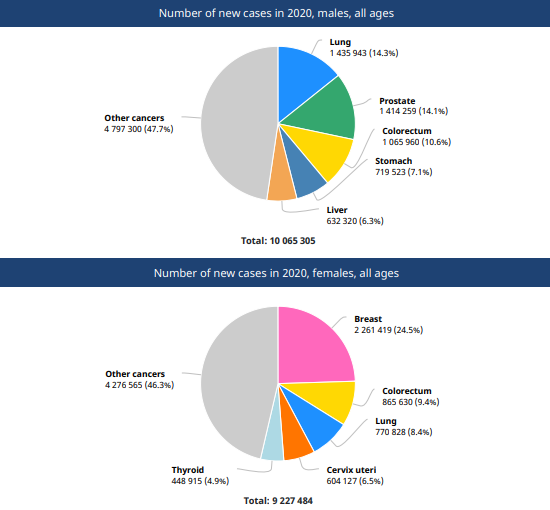Mariana Nakajuni / Einstein Agency.– A recent study published by the Global Cancer Observatory (GCO) reveals that, in the last year, breast cancer was responsible for 11.7% of new cancer cases in the world, with 2.26 million registered cases. These numbers made it the most diagnosed cancer disease in 2020, surpassing lung cancer, which had 2.2 million new cases. This statistic excludes non-melanoma skin cancer, which is rarely fatal.
“It should be remembered that lung cancer affects both men and women, unlike breast cancer, in which 99% of cases occur in women “, points out the oncologist Rafael Kaliks, from Hospital Israelita Albert Einstein (São Paulo, Brazil). Considering only women, breast cancer accounted for 24.5% of new cases in 2020. The doctor explains that there is a global trend towards an increase in the incidence of breast cancer, at the same time, there is a reduction, albeit gradually, in cases of lung cancer, mainly due to the progressive decrease in smoking throughout the world.
 |
| In 2020, breast cancer exceeded the incidence of lung cancer |
Kaliks adds that the expansion of screening mammography, a test that potentially detects breast cancer at an earlier stage, also contributes to more cases being diagnosed. At the same time that the number of diagnosed cases increases, the test increases the chance of a cure by diagnosing tumors in the early stages. Another factor contributing to the increase in cases is the highest incidence of obesity and physical inactivity, two risk factors for the development of the disease.
Breast cancer can be found early
On the other hand, though breast cancer incidence is higher, death rate is small compared to lung cancer, especially when there is an early diagnosis. “Breast cancer has an advantage: it can be detected early, and when it does, we have an immense chance of curing diagnosed cases,” says Kaliks.
 |
| 2020 statistics, by sex and type of cancer, demonstrate the preeminence of breast cancer cases worldwide |
Mammography is the main resource for diagnosis of the disease in its initial stages, with the ability to identify non-palpable nodules, smaller than 1 centimeter. According to the Brazilian Society of Mastology (SBM), the general recommendation is that women have an initial mammogram between the ages of 35 and 40 and, after age 40, have a mammogram annually.
–


